Rushbearing Festival
An online event to inspire you offline: July 18 - 19, 2025
[...] The green rush, the green rush, we bear it along,
To the church of our village with triumph and song,
We strew the cold chancel and kneel on it there,
While its fresh odours rise with our voices in prayer.
Hark the peal from the old tower in praise of it rings,
Let us seek the green rush by the green woodland springs.Letitia Elizabeth Landon (1802-1838), "The Rush-Bearing at Ambleside"
LET’S GO RUSHBEARING!
In years past, churches had hard, dirt ground rather than stone or wood flooring. Parishioners would help harvest (or puchase) soft, botanical flooring cover: water grasses like rushes, hay, and a variety of herbs & flowers that added a pleasant scent - and also repelled critters.
Over time, that practical need transformed into a vibrant liturgical ritual: processions were held to bear the rushes back to the church, ‘bearings’ of different shapes (crosses, wreaths, harps!) were woven, garlands and posies of flowers adorned the church and the people. Some towns even had rushbearing carts, decorated to the hilt with rushes, flowers, and silver bits & bobs; others chose a rushbearing queen to preside over the festivities. As the rushes were spread on the floor, a special service was held, with picnics & festivities continuing throughout the rest of the day.
Each village had its own rushbearing customs, with the date of this fragrant celebration varying to blend with devotions and Saints that were particularly meaningful to each community. In some towns, the tradition has continued past its practical need, with grand processions and gatherings still taking place - long after the need for floor covering has waned.
Read more about Rushbearing in my previous articles!
Next weekend, we’re going to use rushbearing as a way to think about our own parish life. What does ‘rushbearing’ look like in our own varied communities? What are the ‘rushes’ that we can bear forth, helping to tend to the spiritual and tangible needs of our churches, our wider communities, our families, and our own faith journey?
In an age when technology (for all its advantages) tends to dis-place us, the rushbearing mindset can help to place us: back into the natural landscape, the community, the church, the time in which we find ourselves.
Rushbearing can be liturgical living at its finest, drawing us deeper into our faith and our communities, inviting us toward devotional sincerity right where we are. While it’s easy to look at the Church calendar and become overwhelmed or set ourselves up against an unrealistic standard of perfection, rushbearing reminds us to look around our own circumstances and ask how we can live liturgically - in responsiveness to God - right here, right now. We don’t need to check every single feast off a list. We don’t need to succumb to a ‘keeping up’ mindset based on what we see online: we need to practice our incarnational theology, leaning into our communities.
So, let’s gather next weekend to talk together, learn from one another, and practice attentiveness: looking deeply to see what sort of ‘rushes’ grow in our own particular places…maybe we see needs that can be met by our local food system, or places where we can bring our unique skills and visions forth to help them flourish, or spiritual deserts that could bloom with a shared cup of coffee and a Bible study…rushbearing will hold unique timing and provision for all of us.
The Rushbearing Festival will be available to all Paid Members - thank you for your continued support, which in turn is helping to fund this festival and support our wonderful speakers!
MEET OUR GUEST SPEAKERS

An incredible lineup of friends will be gathering with us for a festive weekend of rushbearing!
All of our guest speakers are ‘rushbearers’ in their varied communities, and they’re joining us to offer encouragement as we explore the spiritual and tangible needs of our own landscapes and lives.
We’ll have a mix of live conversations and pre-recorded video chats, and the schedule of events will be sent to paid members next week with all the fun details…
In the meantime, here’s a bit more about some of our speakers!
Kat Hoenke
St. Kateri Conservation Center
Executive Director, Landscape Ecologist, GIS Coordinator
The St. Kateri Conservation Center is a Catholic conservancy and land trust that promotes faith, ecology, biodiversity, and climate resilience. Kat is a spatial ecologist and GIS specialist with a Masters of Environmental Management in Ecosystem Science and Conservation from Duke University. Kat directs theirGIS and Esri Story Map programs, and is active in all aspects of advancing their mission, including public outreach, planning, land protection, stewardship, grant writing, education, and social media.Shauna’h Fuegan
St. Kateri Conservation Center
Board of Directors: Chairperson
Shauna’h is a trained educator and currently works as a Senior Academic Technology Consultant at Bates College in central Maine. She has spent her personal and professional life working at the intersection of technology and education.Shauna’h holds Master of Science degrees in Education as well as Instructional Technology. She has a Bachelor’s degree from Yale University where she majored in Political Science and studied the origins and impacts of political violence and genocide. In her work at Bates, Shauna’h guides faculty through the design of curriculum centered around inclusive pedagogies. Shauna’h is a citizen of the Mohawk Nation (Kanien’kehá:ka) and grew up with a strong devotion to Saint Kateri Tekakwitha. She is also a professed member of the Secular Franciscan Order.
Janelle
Paternoster Guild
Artisan
The modern day rosary is the direct descendent of the medieval rosary, the Paternoster, whose origins reach back at least 1000 years. Paternoster prayer beads developed during the early Middle Ages, eventually used by just about everyone in medieval Europe as an aid to prayer. They also frequently doubled as fashion accessories, being pinned to a cloak or draped over a belt. These prayer beads were originally named after the Our Father prayer - which in Latin is “Pater Noster” - which was most often prayed on them in the earlier centuries. Those who made and sold them were called Paternosterers, and would have been part of their local craft guild - the Paternoster Guild!
Here at our own Paternoster Guild you will find an assortment of these fine hand-crafted Medieval prayer beads, using specially sourced natural and historically authentic materials. Many of our designs are direct re-creations of Paternosters depicted in medieval art or described in medieval manuscripts.Kristen Einertson & Tessa Muench
All the Household
Co-founders
All the Household is a blog and community for Lutherans who want to use the Church’s calendar to center their household life around the Church’s Lord. As Lutheran women, Kristen & Tessa both have a deep and abiding love for their liturgical heritage. They know that the Church has a multitude of lessons to teach us about Christian faith and life through traditions old and new.
Mustard Seeds & Wildflowers
Wife, homeschooling mom, Catholic writer
Mandy writes about real life, faith, family, motherhood, the Catholic Church, and the quiet ways God meets us right where we are. She also shares the rich traditions and teachings that have shaped her faith since joining the Church 14 years ago. Her hope is that these reflections encourage you, uplift you, and remind you that you’re not alone.
Tanglewood Atelier
ArtistTanglewood Atelier is a creative studio run by illustrator Emma Walton and its mission is to visually communicate the Gospel and the beauty of the Catholic faith through thoughtfully-made resources, illustration and creative design.
SOUVENIRS
In Grasmere, England, Rushbearing was once (and still remains!) a vibrant, beloved summer custom for local parishioners.
Since the mid-1800s, a local gingerbread bakery has provided the gingerbread treats to hungry rushbearers on their festival day!
In keeping with that tradition, I have lovely ‘door prizes’ for guests who will be joining us for the Rushbearing Festival: gingerbread straight from Sarah Nelson’s bakery in Grasmere, other sweet items from the bakery, and more.
And, in addition to all of the gingerbread goodies, guests at one of our live Rushbearing chats can win a set of Paternoster beads!
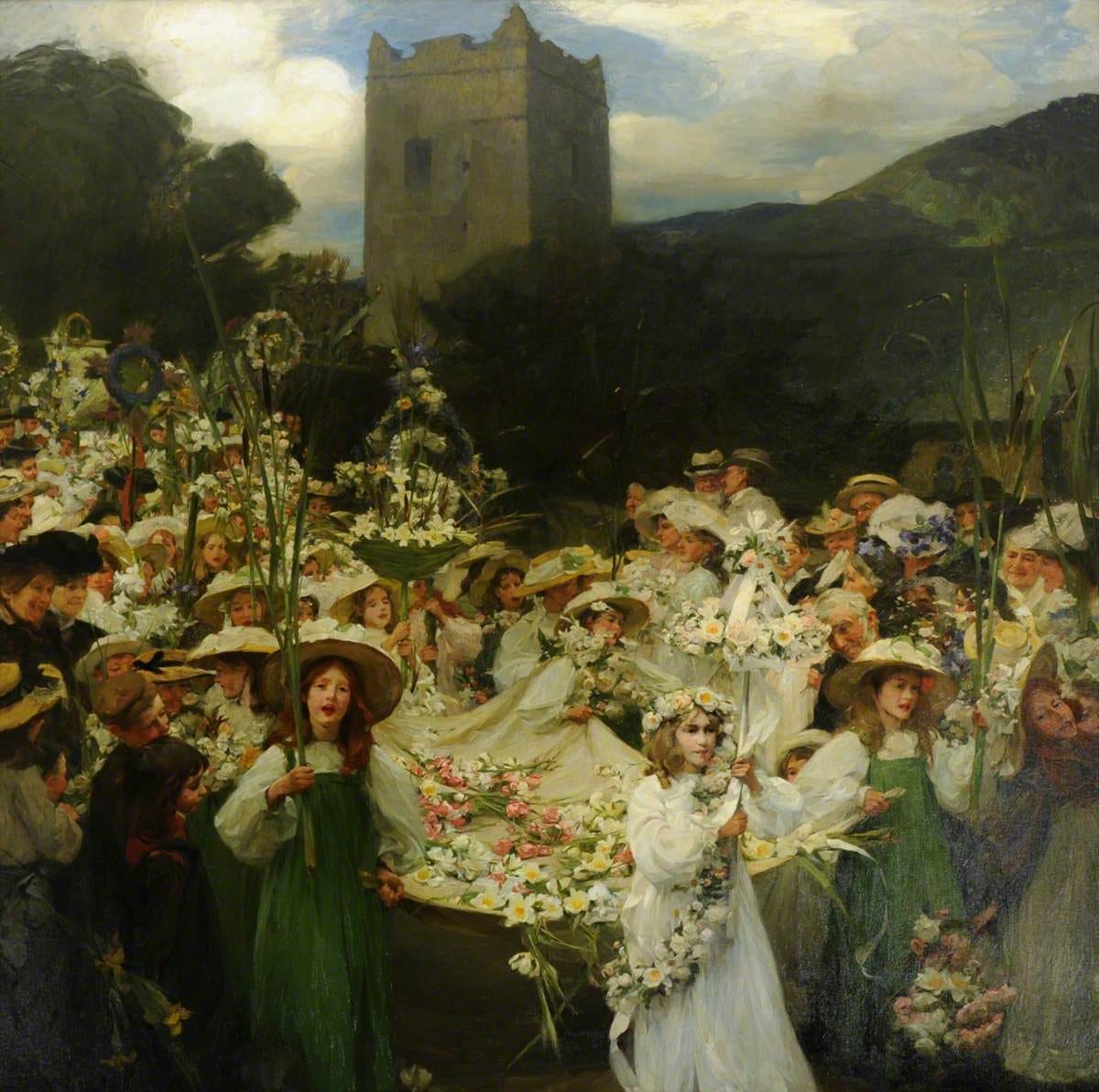
Our fathers to the house of God,
As yet a building rude,
Bore offerings from the flowery sod,
And fragrant rushes strewed.May we, their children, ne’er forget
The pious lesson given,
But honour still, together met,
The Lord of earth and heaven.Sing we the great Creator’s praise,
Who sends us sun and showers,
To cheer our hearts with fruitful days,
And deck our world with flowers.These of the great Redeemer’s grace
Bright emblems here are seen!
He makes to smile the desert place
With flowers and rushes green!Rev. Owen Lloyd, The Rushbearing Hymn
I’ll see you next weekend for our first annual Rushbearing Festival! If you’re a Paid Member, expect a post in your inbox next week with a schedule of events and all the links you need.
If you’d like to help spread the word, feel free to download and share this image:
…and let me know if you have any questions!
Pax et bonum,
Kristin




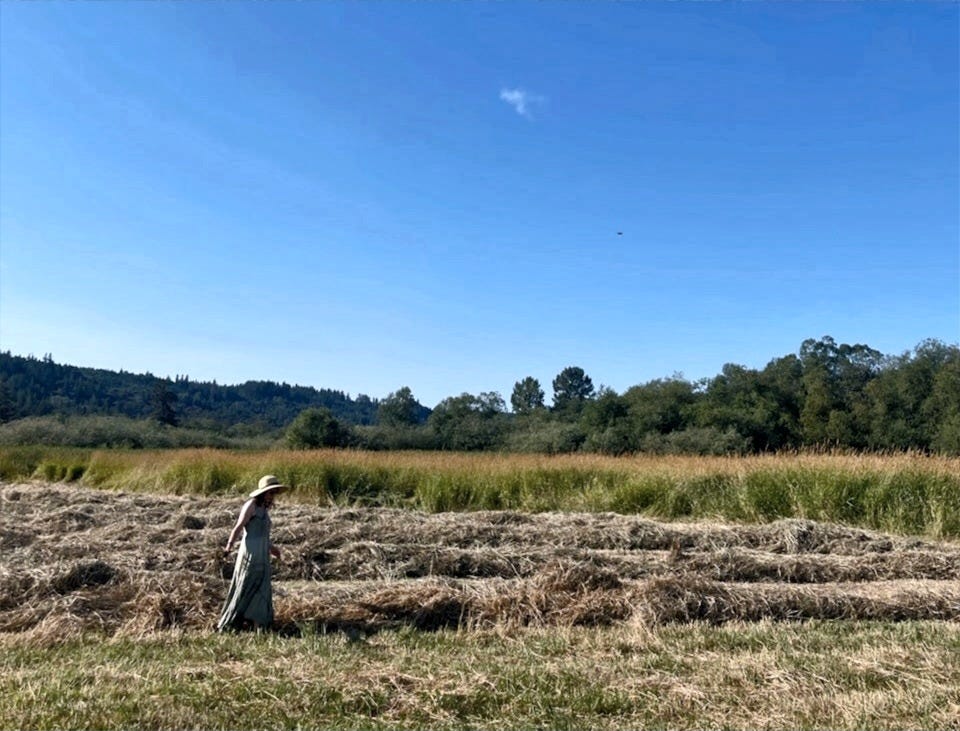






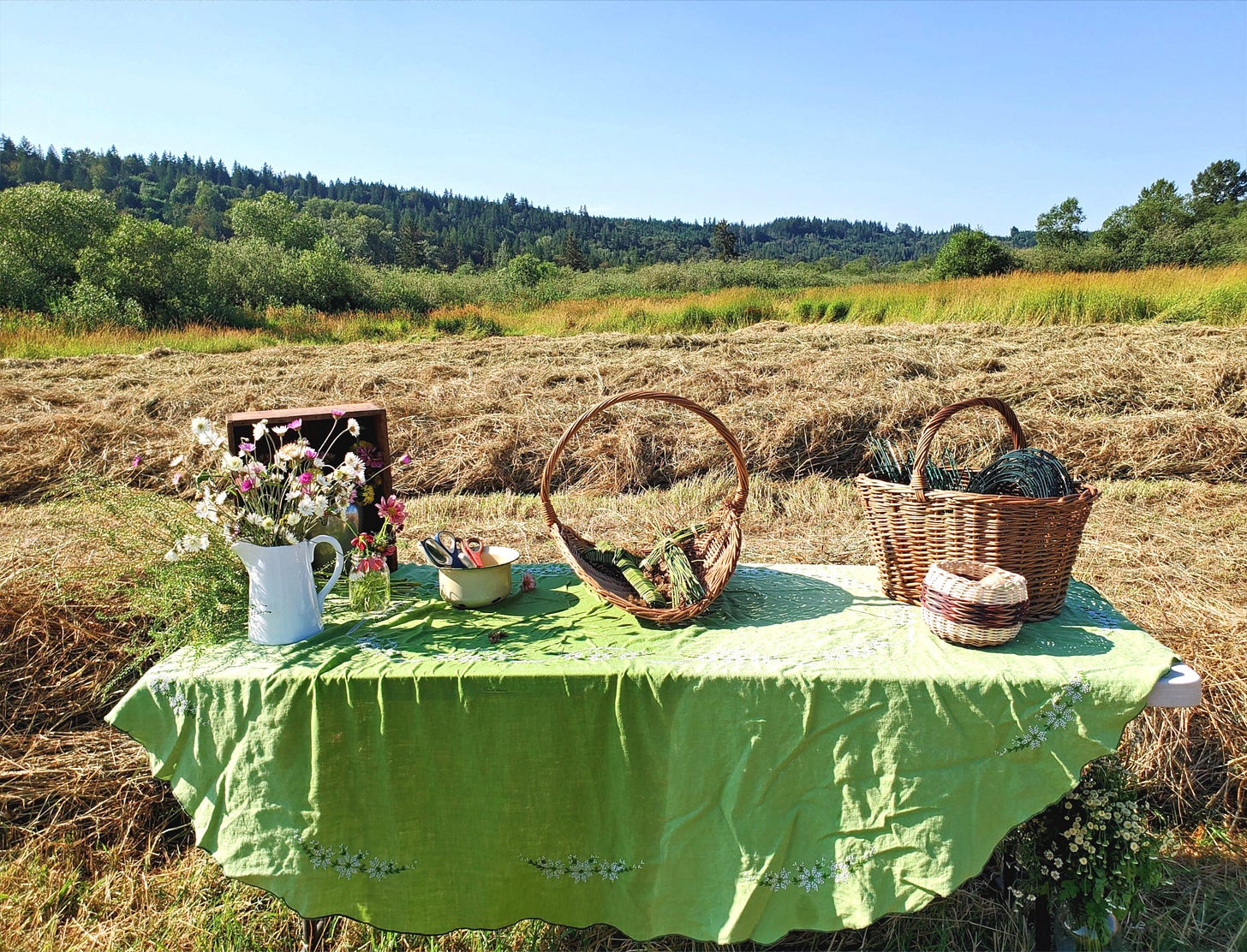
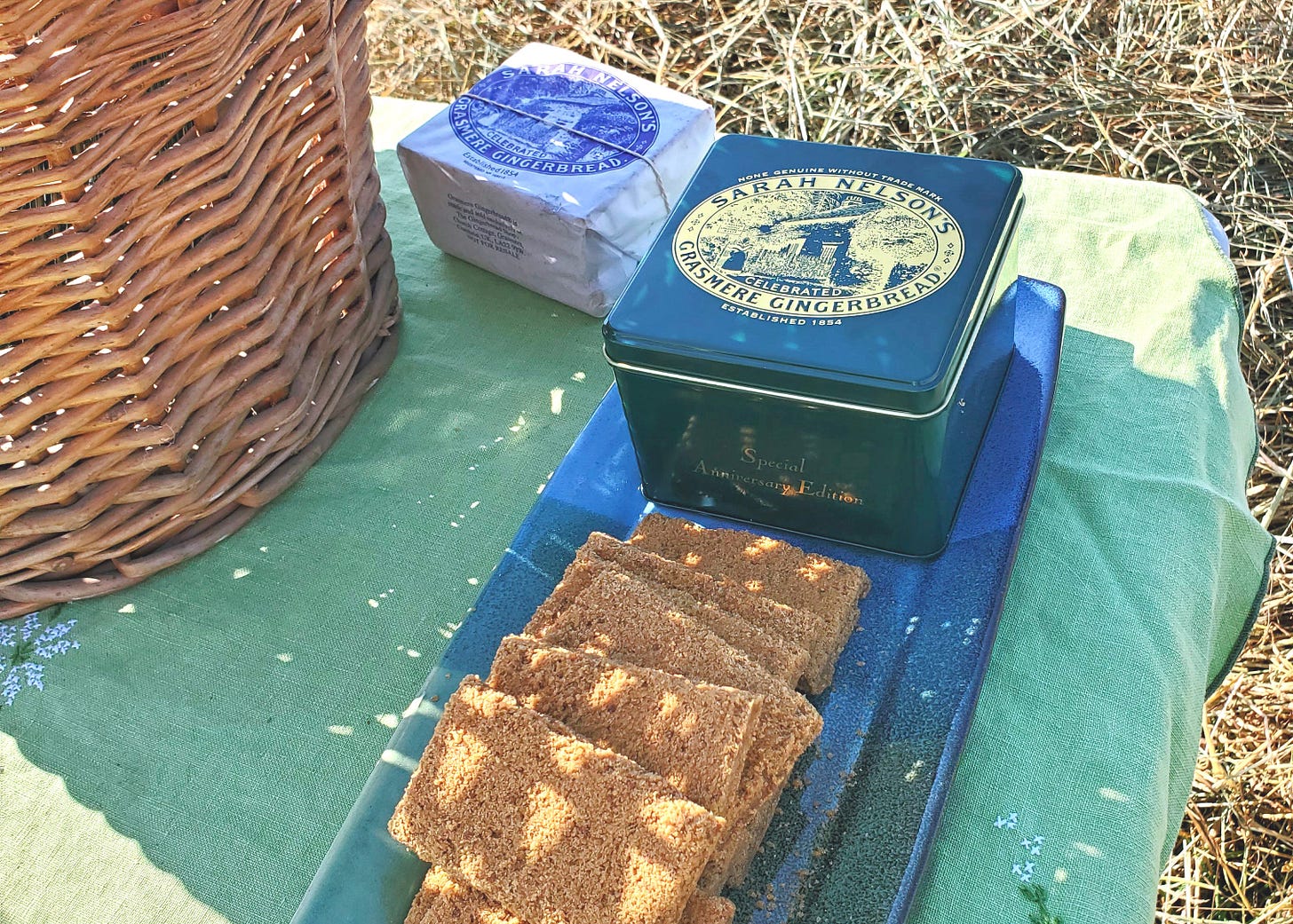

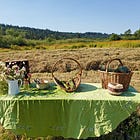


I'm so impressed by the beauty you create and the people you're able to gather around you - and share with us!
I love this reminder about daily, incarnational living grounded in your own local context. It certainly adds depth and meaning to the truism “bloom where you’re planted”!